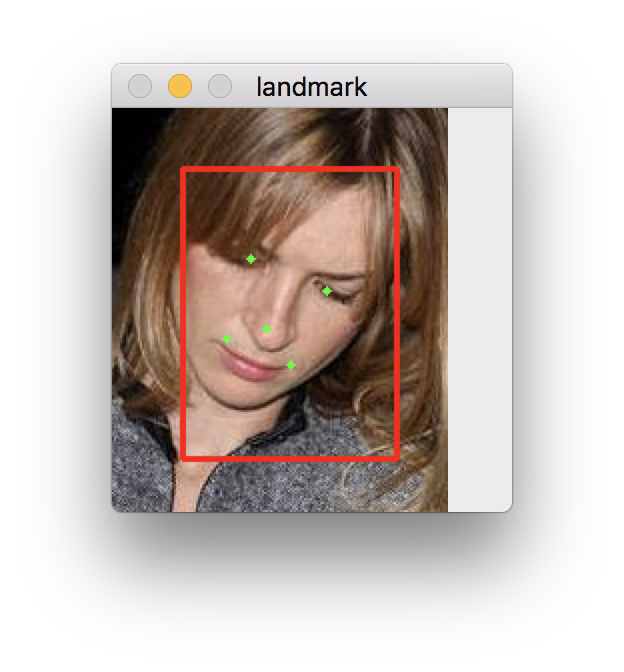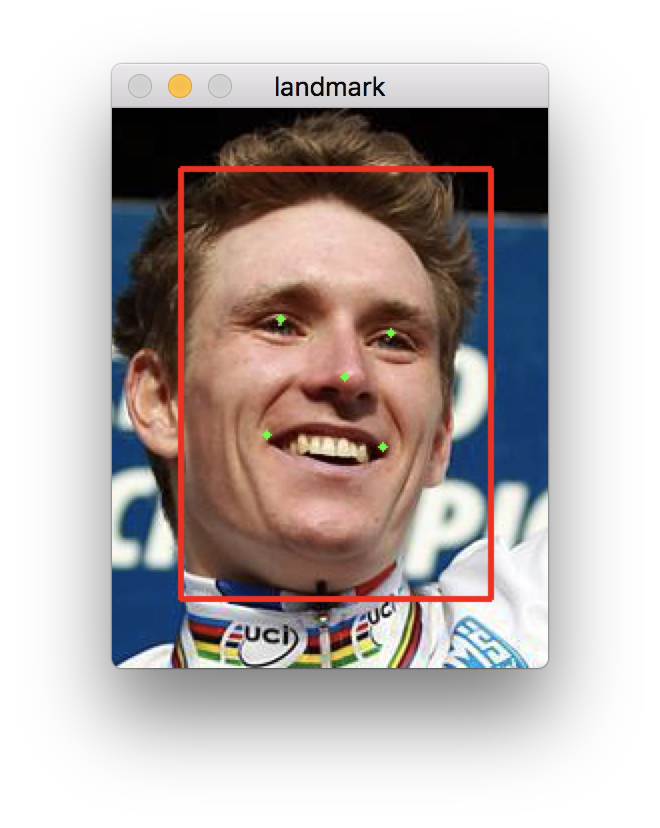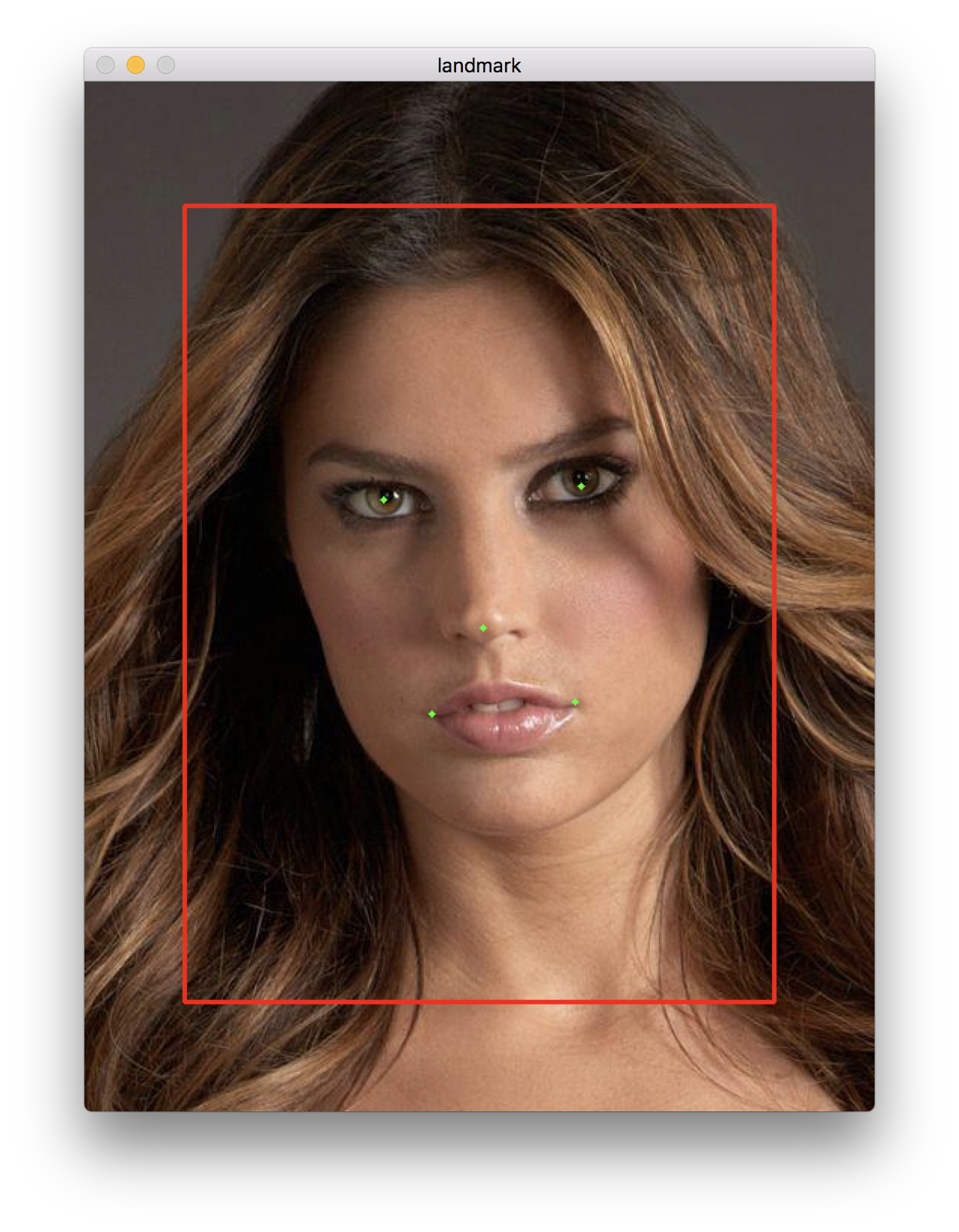C++ implementation of Face Alignment at 3000 FPS via Regressing Local Binary Features. It could runs 7000+fps in my cpu computer.
We only need OpenCV and CMake to build the project.
git clone https://github.com/memoiry/face-alignment
cd face-alignment
mkdir build
cd build
cmake ..
make
The project provide several function.
- Prepare the training file.
- Train the model using your dataset.
- Face alignment on a image with bounding box information and trained model.
- Test the effectiveness of a trained model using the dataset you provide.
- Real-time face alignment on a camera using opencv's VJ detection algorithm.
We can download dataset from helen dataset. The dataset contains 68 points for every face, however it doesn't provide a bounding box for faces. We need a face detector to generate face bounding box (The haar-like cascade detection provided by OpenCV is a good choice ).
Download the dataset and extract the data (xxx.jpg and xxx.pts) to the directory e.g. /home/test/dataset/afw. We also need one text file Path_Images_train.txtto list the images used for training. The dir command on Windows and findcommand on Linux could do this job. Simply run the command on Linux:
$ find /home/test/dataset/afw/ -name "*jpg" > /home/test/dataset/afw/Path_Images_train.txt
When Path_Images_train.txt is prepared, we also need one text file train.txt. Each line of the text file points out an image path and face bounding box in this image with facial points location. We use VJ detector provided by OpenCV. Run lbf prepare command to generate the text file train.txt:
$ ./lbf prepare /home/test/dataset/afw/Path_Images_train.txt haarcascade_frontalface_alt.xml train.txt
- /home/test/dataset/afw/Path_Images_train.txt: the whole path that holds
Path_Images_train.txt - haarcascade_frontalface_alt.xml: OpenCV haar-like face detect model
- train.txt: output file that holds image path and face bounding box in this image with facial points location
The effectiveness of LBF is quite dependent on the bounding box provided by detection algorithm. While opencv's cascade VJ algorithm provide a square bounding box, the SSD algorithm usually produce a rectangle bounding box. So I highly suggest using the bounding provided by the detection algorithm you will use instead of using prepare script which utilize opencv's VJ algorithm. I have provided a python script as a example to produce train.txt file
The command $ ./lbf train will start training from text file train.txtand saving model into file e.g. my.model
$ ./lbf train train.txt my.model
- train.txt: text file generated by
$ ./lbf preparecommand - my.model: save model file
The command $ ./lbf live will find faces on input image and locate facial points.
$ ./lbf live my.model haarcascade_frontalface_alt.xml test.jpg
- my.model: pre-trained model file
- haarcascade_frontalface_alt.xml: OpenCV haar-like face detect model
- test.jpg: input image
./lbf run ../model/celeba_5000.model ../test_model.txtYou may need to place the CelebA dataset in the order of test_model.txt.
The model was trained on SSD bounding box and celebA dataset. It performs bad on VJ bounding box.
The command $ ./lbf camera will find faces from you camera and locate facial points.
./lbf camera ../model/helen.model ../model/haarcascade_frontalface_alt.xml 0
- helen.model: pre-trained model in helen dataset(on opencv's dataset).
- haarcascade_frontalface_alt.xml: OpenCV haar-like face detect model
- 0: camera index
I provide some pre-trained models which you can find from the directory model.



